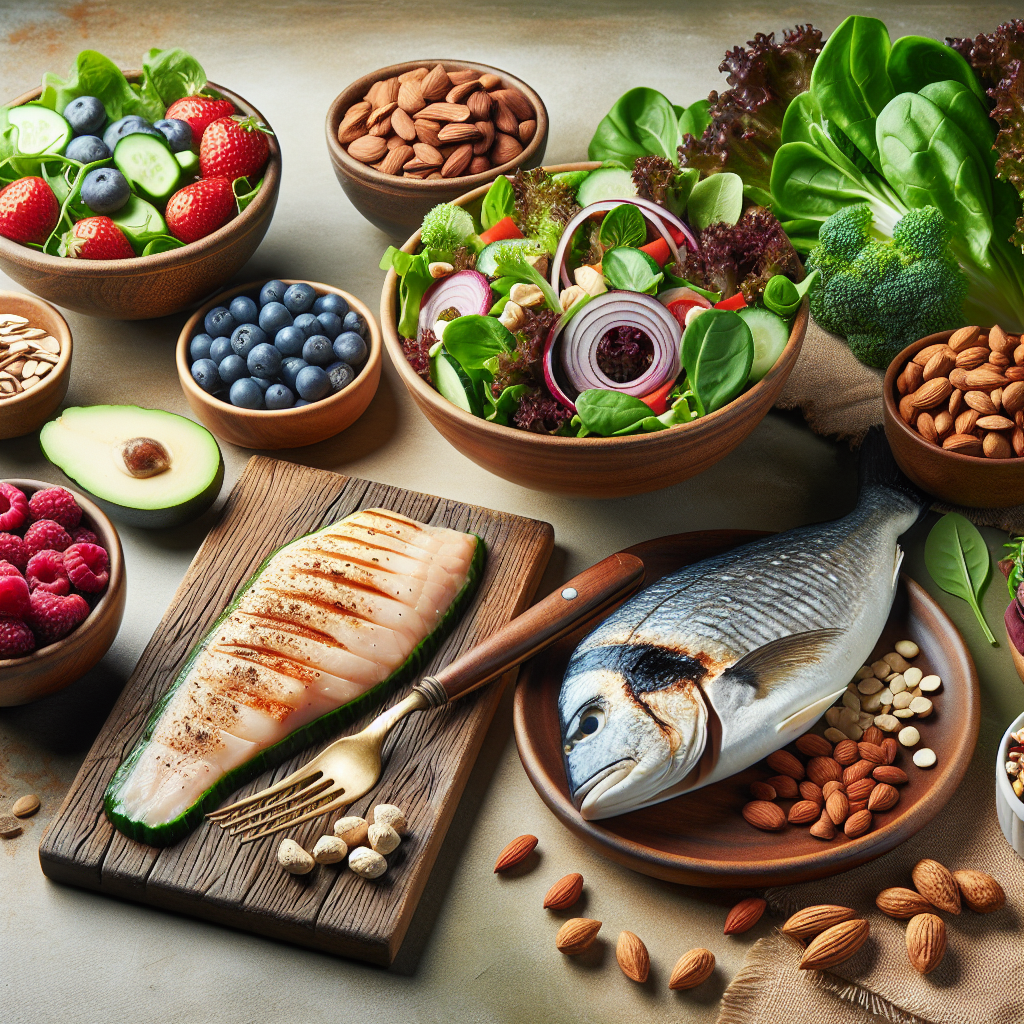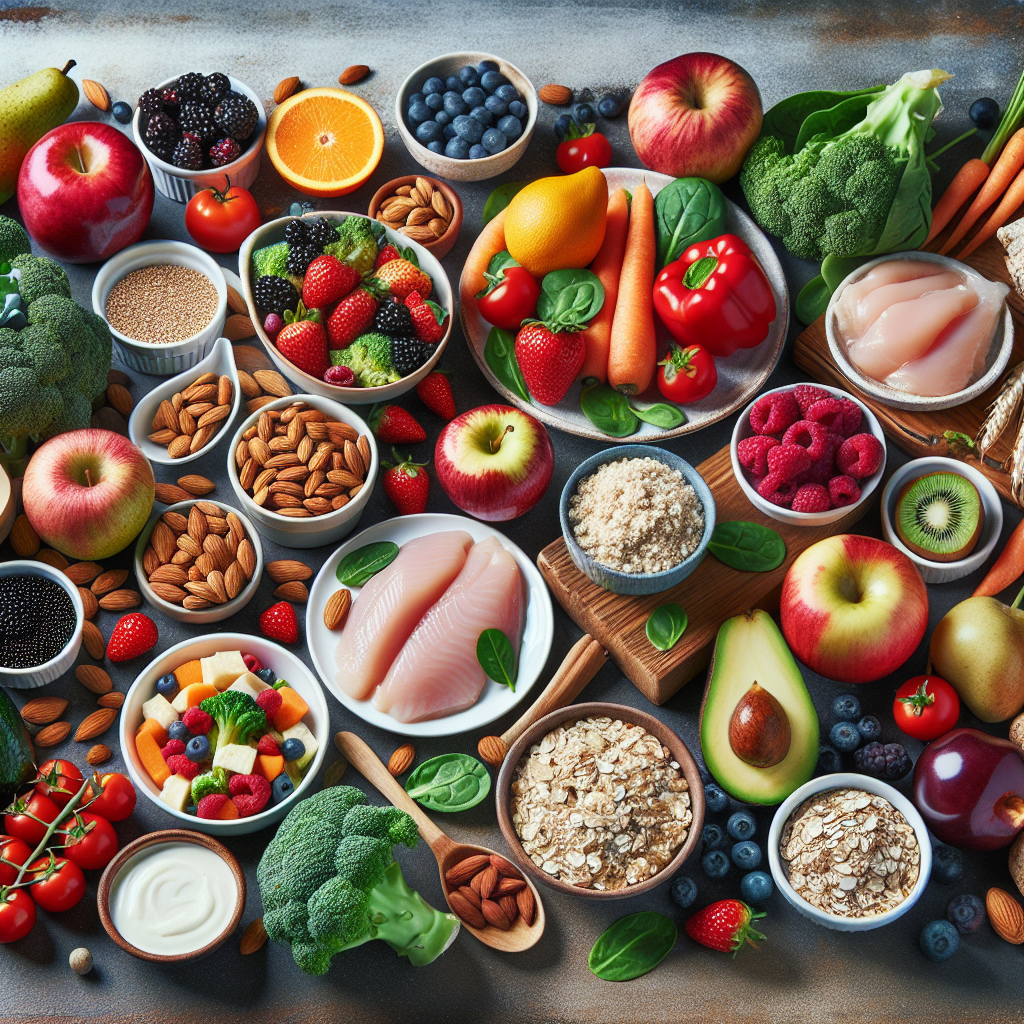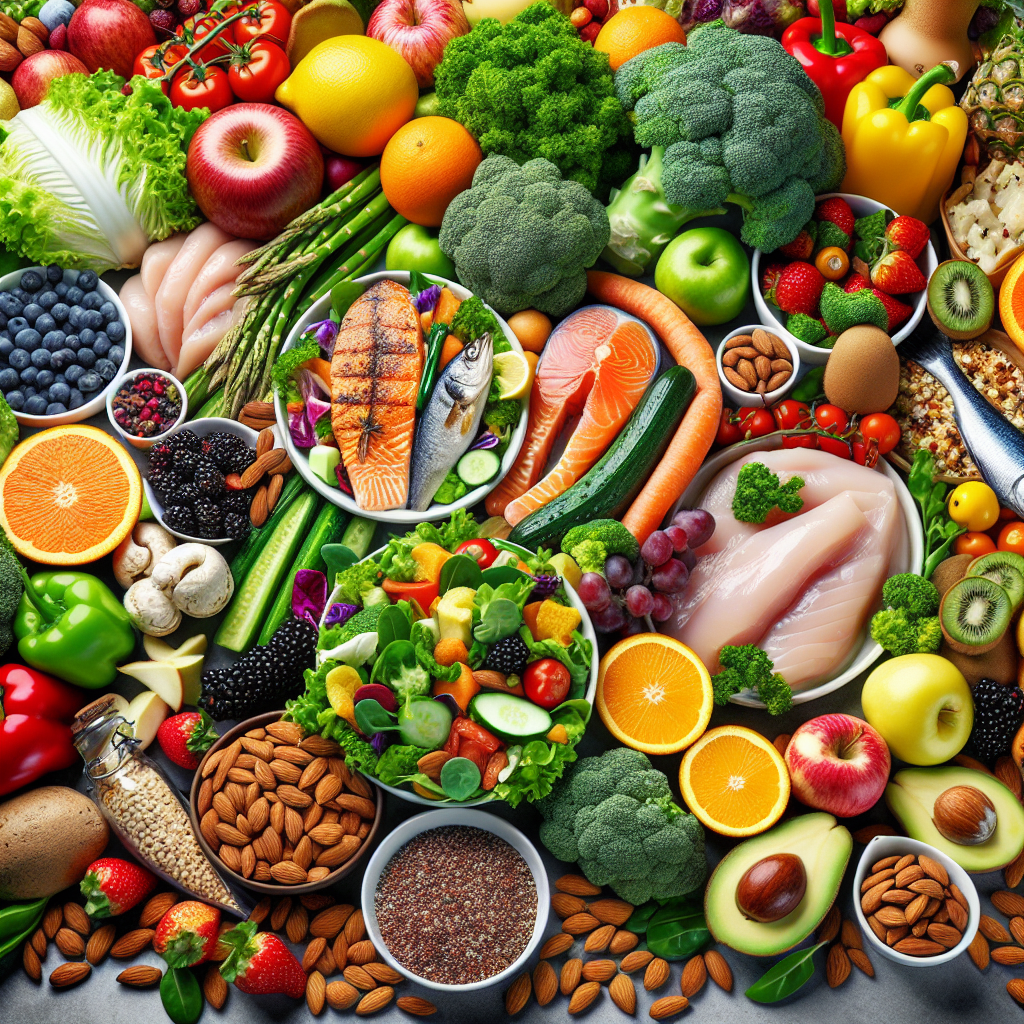What are the best foods for weight loss? It’s tempting to look for a magic list, but the truth is simpler and more empowering: the best foods are the ones that help you feel full, stay energized, and enjoy your meals while naturally reducing overall calorie intake. Food quality matters, but so does how those foods support your habits. The most helpful choices tend to be high in protein and fiber, lower in energy density (calories per gram), rich in micronutrients, and satisfying enough to make a calorie deficit feel manageable.
Here are the core principles that make a food “weight-loss friendly”:
– High protein: Protein is the most satiating macronutrient and helps preserve muscle while losing fat. Aiming for about 25–35 grams per meal keeps hunger in check.
– High fiber: Fiber adds volume and slows digestion, supporting fullness and steady energy. Think vegetables, fruit, legumes, and whole grains.
– Low energy density: Foods with high water and fiber content (soups, vegetables, many fruits) let you eat big portions for relatively few calories.
– Minimal processing: Whole or minimally processed foods are typically more satisfying and harder to overeat than ultra-processed options.
– Convenience and taste: The best foods are the ones you’ll actually prepare and enjoy consistently.
With those principles in mind, here are some of the best foods to build a weight-loss-friendly plate.
Lean proteins
Protein anchors your meals, blunts hunger, and supports muscle. Lean options give you more protein per calorie.
– Eggs and egg whites: Eggs are nutrient-dense and versatile; egg whites add protein with fewer calories.
– Poultry and lean meats: Skinless chicken or turkey breast, lean ground turkey, sirloin, pork tenderloin.
– Fish and seafood: Salmon, tuna, cod, shrimp, and sardines offer protein; fatty fish add heart-healthy fats. Canned options are budget-friendly.
– Dairy and alternatives: Greek yogurt, skyr, and cottage cheese are high in protein; opt for plain versions and add fruit or cinnamon. Unsweetened soy yogurt is a good plant-based option.
– Tofu, tempeh, edamame: Excellent plant proteins that absorb flavors well.
– Protein-forward legumes: Lentils, chickpeas, and black beans offer both protein and fiber.
High-fiber vegetables
Non-starchy vegetables deliver volume for very few calories, making your plate look and feel abundant.
– Leafy greens: Spinach, kale, romaine, arugula, mixed greens.
– Cruciferous vegetables: Broccoli, cauliflower, Brussels sprouts, cabbage—great roasted for deeper flavor.
– Hydrating veggies: Cucumbers, zucchini, tomatoes, peppers, mushrooms.
– Flavor builders: Onions, garlic, herbs, and spices make low-calorie food satisfying.
Fruits that fill you up
Whole fruits provide fiber and water; they’re sweet, satisfying, and more filling than juice or dried fruit.
– Berries: High fiber, low calories, big flavor—great for snacks and yogurt bowls.
– Apples and pears: Pectin-rich and slow-digesting; pair with a protein for lasting satiety.
– Citrus: Oranges and grapefruit offer volume and brightness with modest calories.
– Melons and kiwi: Refreshing, hydrating options, especially in warmer months.
Legumes and whole grains
These foods add slow-digesting carbs, fiber, and a bit of protein. They’re especially helpful if you’re active or prefer a moderate-carb approach.
– Beans and lentils: Black beans, kidney beans, chickpeas, and lentils are inexpensive and versatile.
– Oats and barley: Oats (especially steel-cut) and barley contain beta-glucan, a fiber that’s particularly filling.

– Quinoa, farro, brown rice: Chewy, satisfying bases for bowls; portion control is easier when combined with ample vegetables and protein.
Fermented foods and yogurt
Fermented dairy and plant-based alternatives can support gut health, which may influence hunger signals and digestion.
– Greek yogurt, skyr, and kefir: Choose plain to avoid added sugars; add fruit, nuts, or a drizzle of honey as needed.
– Fermented vegetables: Sauerkraut, kimchi, and pickles add tang and crunch for few calories.
Nuts and seeds
Though energy-dense, nuts and seeds are linked to better weight control thanks to their satiating combo of fat, fiber, and protein. Portion awareness matters.
– Almonds, walnuts, pistachios: A small handful (about 20–30 grams) works well as a snack.
– Chia and flax seeds: Add to yogurt or oatmeal to boost fiber and omega-3s.
– Pairing tip: Combine a small portion with fruit or raw vegetables for volume and satisfaction.
Healthy fats
Dietary fat adds flavor and satiety. Use it strategically; a little goes a long way.
– Extra-virgin olive oil: Great for dressing salads or finishing cooked vegetables.
– Avocado: Creamy texture and fiber make meals more satisfying; mind portions.
– Fatty fish: Salmon, mackerel, and sardines provide omega-3s and protein.
Soups, broths, and stews
Starting meals with a broth-based soup boosts fullness and often reduces overall calorie intake. Load soups and stews with vegetables, lean protein, and legumes; use herbs, spices, and acid (lemon, vinegar) for bold flavor without adding many calories.
Spices, acids, and flavor boosters
Flavor can make or break adherence.
– Herbs and spices: Chili, cumin, turmeric, paprika, garlic, and ginger enhance taste and may modestly influence appetite or metabolism.
– Vinegars and citrus: Brighten dishes and reduce the need for heavy sauces.
– Low-calorie condiments: Mustard, hot sauce, salsa, and light soy sauce add punch for minimal calories.
Hydrating, low-calorie beverages
Liquid calories can derail progress; choose drinks that help hydration without sneaky sugars.
– Water and sparkling water: Add lemon, lime, or cucumber for variety.
– Tea and coffee: Black coffee and unsweetened green or herbal teas are low-calorie; avoid heavy syrups and creamers.
– Milk alternatives: Choose unsweetened versions if you enjoy them in coffee or smoothies.
What to limit
You don’t need to ban foods, but being strategic helps.
– Ultra-processed snacks and sweets: Chips, candy, and pastries are engineered to be over-eaten and offer little fullness per calorie.
– Sugar-sweetened beverages and juice: Easy to drink, hard to register; prioritize whole fruit instead.

– Alcohol: Lowers inhibitions around food and adds empty calories; if you drink, set clear limits and choose lighter options.
Smart cooking methods
How you prepare food matters as much as what you choose.
– Roast, grill, air-fry, steam, or sauté with minimal oil to keep calories in check.
– Build flavor with spice rubs, citrus, and vinegar rather than heavy creams or butter.
– Bulk up meals with vegetables; swap half the pasta or rice for zucchini noodles, cauliflower rice, or shredded cabbage.
A simple plate formula
Make most meals with this structure:
– Protein: 25–35 grams (e.g., 2–3 eggs plus egg whites, 4–6 oz chicken, 3/4 cup Greek yogurt, 1 cup tofu, 1 cup cooked lentils).
– Produce: At least half the plate from vegetables and/or fruit.
– Smart carbs or fats: Choose one or balance smaller amounts of both (e.g., 1/2 cup cooked whole grains or a small handful of nuts/1–2 teaspoons olive oil).
– Flavor: Herbs, spices, vinegar, citrus, and low-cal condiments.
Example day
– Breakfast: Greek yogurt with berries, a spoon of chia seeds, and cinnamon; coffee or tea.
– Lunch: Big salad with mixed greens, cherry tomatoes, cucumbers, chickpeas, grilled chicken, and a vinaigrette; sparkling water.
– Snack: An apple with a small handful of almonds, or carrots with hummus.
– Dinner: Baked salmon with roasted broccoli and a side of quinoa, finished with lemon and herbs.
– Dessert: Cottage cheese with sliced peaches, or a square of dark chocolate alongside herbal tea.
Personalization and sustainability
Different dietary patterns can work: Mediterranean, plant-forward, low-carb, or higher-carb for active individuals. The best plan is one you enjoy and can maintain. Consider:
– Culture and preference: Adapt these principles to the foods you love—think bean-based stews, tofu stir-fries, hearty vegetable soups, or grilled fish with salads.
– Budget: Rely on canned fish, eggs, dried beans, seasonal produce, and store-brand Greek yogurt.
– Time: Batch-cook proteins and grains, pre-chop vegetables, and keep frozen produce on hand.
Common pitfalls and how to avoid them
– Health halo trap: “Natural” or “organic” doesn’t always mean lower calorie. Granola, energy bars, and “keto” snacks can be deceptively dense.
– Smoothies and bowls: Easy to over-pour. Measure calorie-dense add-ins (peanut butter, seeds) and favor vegetables and whole fruit over juices.
– Mindless munching: Use small bowls, plate your snacks, and keep tempting foods out of sight.
– Under-protein breakfasts: Starting the day with largely refined carbs can spike hunger; include eggs, Greek yogurt, tofu, or cottage cheese.
The bottom line
Weight loss comes down to creating a calorie deficit, but the foods you choose can make that deficit feel natural rather than punishing. Emphasize lean proteins, high-fiber vegetables and fruits, legumes, and whole grains; use nuts, seeds, and healthy fats thoughtfully; flavor boldly with herbs, spices, and acids; and keep most of your drinks calorie-free. Build meals around protein and produce, add smart carbs or fats, and season generously so you genuinely enjoy what you eat. With consistency, flexibility, and a focus on satisfaction, these foods can help you lose weight and feel good doing it.

